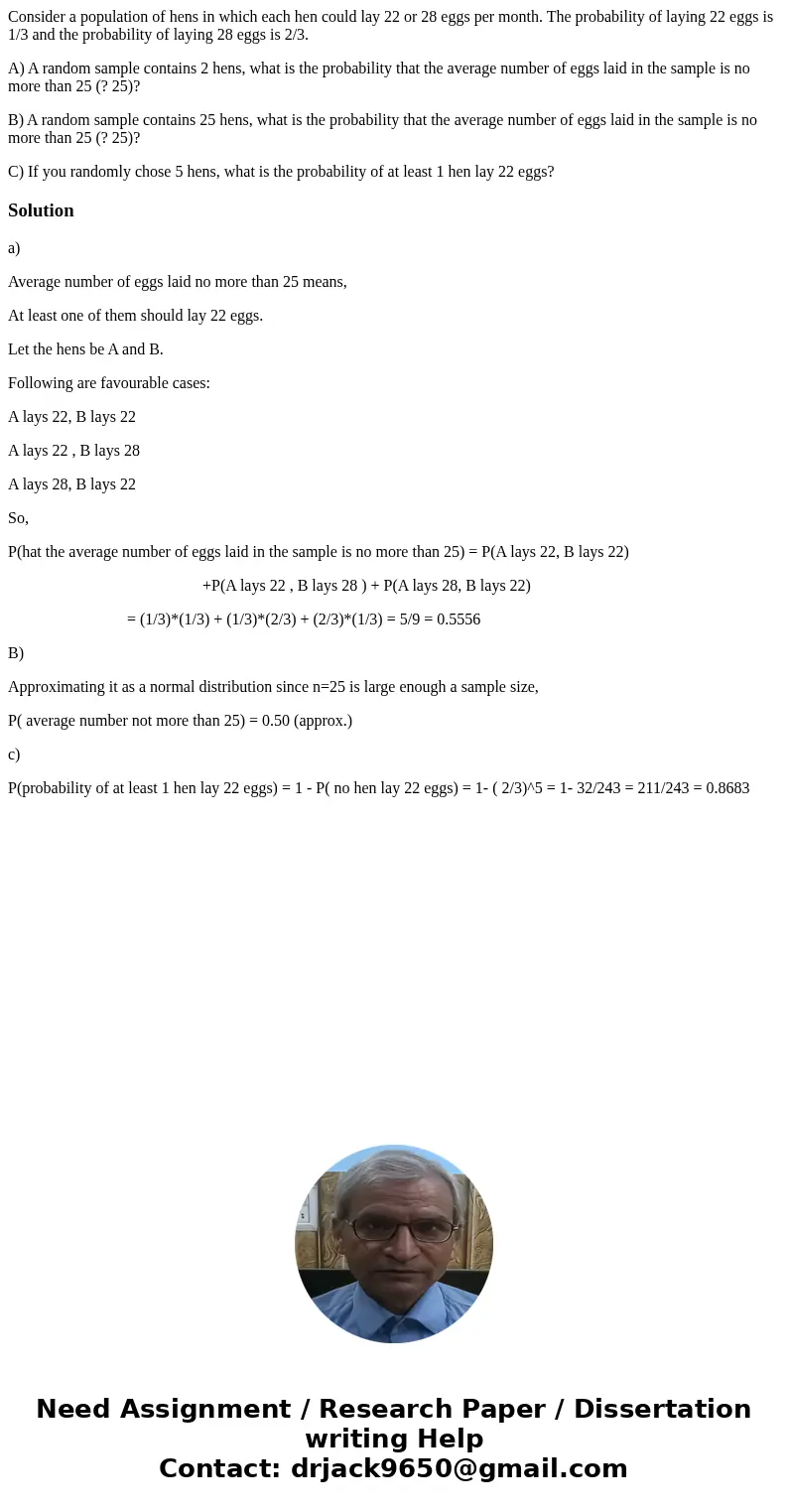Consider a population of hens in which each hen could lay 22
Consider a population of hens in which each hen could lay 22 or 28 eggs per month. The probability of laying 22 eggs is 1/3 and the probability of laying 28 eggs is 2/3.
A) A random sample contains 2 hens, what is the probability that the average number of eggs laid in the sample is no more than 25 (? 25)?
B) A random sample contains 25 hens, what is the probability that the average number of eggs laid in the sample is no more than 25 (? 25)?
C) If you randomly chose 5 hens, what is the probability of at least 1 hen lay 22 eggs?
Solution
a)
Average number of eggs laid no more than 25 means,
At least one of them should lay 22 eggs.
Let the hens be A and B.
Following are favourable cases:
A lays 22, B lays 22
A lays 22 , B lays 28
A lays 28, B lays 22
So,
P(hat the average number of eggs laid in the sample is no more than 25) = P(A lays 22, B lays 22)
+P(A lays 22 , B lays 28 ) + P(A lays 28, B lays 22)
= (1/3)*(1/3) + (1/3)*(2/3) + (2/3)*(1/3) = 5/9 = 0.5556
B)
Approximating it as a normal distribution since n=25 is large enough a sample size,
P( average number not more than 25) = 0.50 (approx.)
c)
P(probability of at least 1 hen lay 22 eggs) = 1 - P( no hen lay 22 eggs) = 1- ( 2/3)^5 = 1- 32/243 = 211/243 = 0.8683

 Homework Sourse
Homework Sourse